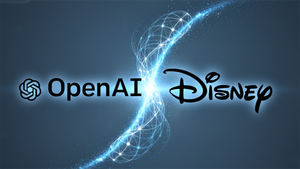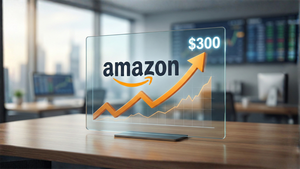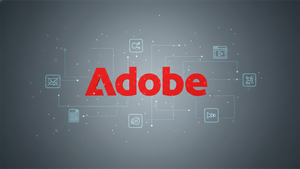
A nonpartisan, data-driven look at clean energy opportunities in the United States: lead it, or pay the price for following
This story first appeared on the Substack blog SRI-ously Speaking
Change is inevitable. As are transitions: the all-important means of adapting to changes.
Dutch researcher Derk Loorbach refers to transitions as the “fundamental changes within the culture, structure, and practices of societal systems.” To illustrate this notion, he developed a concept known as the ‘X-curve’ (below) — an application of these transition dynamics within a society or a specific context.
While this may sound complicated, the theory is simple: over time, new ‘things’ (the blue line) come along to replace old ‘things’ (the orange line) until the old ‘things’ become obsolete and the new ‘things’ become the new standard. For each of these ‘things’ are five stages: three before the transition (cross-over) happens, followed by two additional stages after the transition. Once the breakdown and phase-out transitions have truly started, there is no turning back — the institutionalization and stabilization of the new ‘thing’ has formally become the new societal norm.
Source: Drift for Transition, “X-Curve: a sensemaking tool to foster collective narratives on system change” (2023)
These stages of transition dynamics can be applied to just about anything. For example, in the business world, streaming services like Netflix (the new) have come to replace physical video rental stores like Blockbuster Video (the old). Outdated technologies are deemed unsustainable and are replaced by more efficient ones.
The X-curve popped into my brain recently after the International Energy Agency (IEA) released its 10th annual report, which highlighted that the world’s energy investment has reached $3.3 trillion and increased spending by 20% in the last decade. The report also looks at how energy spending in different categories has changed over the last decade.
See if you can spot the noteworthy pattern in their summary chart:

Source: International Energy Agency, World Energy Investment Report, 2025
Hmmm.
While not on the same axis, the dynamics of this chart and the X-chart are uncanny. Renewables, grids/storage, energy efficiency, nuclear and electrification all show signs of “building up”, while oil, natural gas, and coal all show signs of “breaking down”.
Perhaps there is a good reason for that.
“One Big Beautiful…”
The recent enactment of the U.S. Congress bill “H.R.1.” (more widely known by its vernacular name, the “One Big Beautiful Bill”) has brought more than anxiety to a large swath of Americans. Among the many issues forthcoming from its implementation are cuts in funding to agencies designed to protect the environment and the public, and an increase in funding to energy industries that have entered the breakdown phase.
H.R.1. stands as a foil to the prior administration’s “Inflation Reduction Act” (or IRA), and rather than compare and contrast the details of each bill, here is a table that summarizes the key differences between the two pieces of legislation specifically on renewable energy:

Whether you are a financial advisor, an investment professional, a business leader, an asset owner, a student, a teacher, a policymaker, or someone with stubborn friends — the information in this piece will help you in making the ECONOMIC and BUSINESS case for why renewable energy investments should continue in the United States: first by assessing how H.R.1.’s stance on renewables will harm the U.S. economy, and second why Republican lawmakers should reconsider their stance on renewable energy investments in the U.S. Ultimately, H.R.1. could not only spell trouble for the U.S. energy sector, but for the U.S. economy overall for years to come.
(NOTE: While I am well aware that there are many reasons to consider clean energy investments, please understand that I am intentionally laboring under the assumption that those needing convincing need to hear the pecuniary argument. Here it is.)
6 key reasons H.R.1. renewable energy stance will harm the U.S. economy
- Undermines clean energy competitiveness: By weakening the incentives outlined in the IRA for renewables and green technologies, we will see a decline in investments in the American renewable energy market, which, up until now, has been one of the fastest-growing sectors of the U.S. economy. The rest of the world is making sizable investments in renewables and green technologies. By doubling down on oil and gas, plus stripping their support for solar and wind, the U.S. will quickly fall behind global leaders like China and the European Union in exports and clean energy innovation.
- Rise in climate-related economic risks: Whether or not it is ‘believed’, the reality is that the burning of fossil fuels exacerbates the risks of climate change. A 2021 study concluded that over 99% of peer-reviewed scientific papers agreed on the link between fossil fuels and climate change; and the 1% that disagreed with the consensus contained errors or could not be replicated. As such, increased production of oil and gas will undermine efforts to mitigate the risks of climate change and thereby increase the likelihood, frequency, and intensity of climate-related disasters — hurricanes, floods, wildfires, severe thunderstorms, droughts, etc. The U.S. already spends in the hundreds of billions of dollars annually on these disasters; increasing their frequency would lead to instability and the potential collapse of the insurance industry, crop failures, food price inflation, and supply chain disruptions.
- Neglects renewable energy transition momentum: As previously stated, the global investment in clean energy reached $3.3 trillion in 2025. By ignoring this shift, H.R.1. will cause capital to be directed to other countries that are more aligned with net-zero transition goals. This also risks the long-term financial stability of companies and workers dependent on carbon-intensive industries; rather than investing in viable alternatives for them, their entire existence is put into jeopardy.
- Opportunity miss for job creation: H.R.1. completely misses the mark when it comes to seizing the opportunity for innovation and competition. Even the U.S. Department of Energy has stated that jobs related to renewable energy employ three times more workers than those in the ‘traditional’ energy sector. The DOE also stated that renewable energy accounted for more than 84% of net new electricity generation jobs in 2022. H.R.1. does not provide any support or provisions for clean energy workforce development or transition strategies, which will potentially cost the U.S. millions of jobs both now and in the future.
- Decrease in U.S. energy resilience: H.R.1. ignores the fact that grid modernization and renewable integration are both necessary to prevent blackouts and reduce America’s dependence on the increasingly volatile fossil fuel markets. The bill does not address any investments in distributed renewables, storage, and microgrids, which would increase local energy security. This could be a whole story on its own: an increased reliance and investments in artificial intelligence (AI), but offering no substantial balance in energy modernization, is like investing in a Ferrari with bicycle tires. It just won’t be possible to use AI applications in the future at current energy levels. According to the World Economic Forum, the computing power required for sustaining AI’s rise is doubling roughly every 100 days. In order to reach a tenfold boost in AI model efficiency, the computation power demanded could surge by over 10,000 times its current usage before it’s fully optimized.
- Weakens U.S. global leadership on climate: Throughout the 20th Century, the United States was seen as the gold standard in many technological and diplomatic aspects. Those days seem to be in the past. Withdrawing virtually all support for climate goals undermines our diplomatic credibility, trade opportunities, and participation in emerging international carbon markets. Not only has the U.S. lost credibility, but it could potentially become even more expensive in the future to do business with the rest of the world. The European Union and other nations are already considering imposing carbon border taxes on the U.S., and further investments in fossil fuels outlined in H.R.1. could make U.S. exports more expensive and less competitive in the global markets.
The “Upside”(?)
While the “Lower Energy Costs Act” component of H.R.1. is marketed to the public as a way to reduce energy costs and increase the U.S. energy independence, there are many long-term negative consequences for the U.S. economy overall. If we zoom out, none of the provisions in H.R.1. help to set up the U.S. energy sector for long-term success in a global market that is actively shifting from fossil fuels towards renewables (see the IEA’s chart way above).
There would be an opportunity for positive growth IF the reform were also paired with pro-renewable policies. However, the bill’s rollback on incentives from the IRA and the emphasis on fossil fuels will ultimately:
- Reduce the U.S. competitiveness in the renewable energy market
- Limit job growth in the emerging energy industry
- Increase investor exposure to volatile fossil-fuel markets and climate risks
The “positives” in H.R.1. related to the U.S. energy markets are 1) largely short-term and 2) restricted. If the U.S. doesn’t have strong, sustained support for clean energy infrastructure and development, there won’t be any long-term benefits realized for the American energy sector. By the time the advocates of H.R.1. recognize this reality, and it will be too late to play catch-up.
6 economic data-driven reasons for Republicans to reconsider H.R.1.’s stance on renewable energy
When it becomes clear how much it costs to avoid investing in renewable energy, and how little there is to gain, this is where progress can happen. But hopefully, having a safe, clean environment is a good enough reason to consider renewable energy in the first place.
Here are six objective, data-driven points on why it is in the long-term economic interest of Republican lawmakers, and the GOP broadly, to reconsider positions that limit renewable energy development:
- Economic growth and job creation: While no Republicans in the House or Senate voted to pass the IRA, it was on track to generate 1.4-1.5 million additional clean-energy jobs by 2030, at the same time increasing the American GDP by 0.84-0.88%. Since its passing, more than 334,000 clean energy jobs and $422 billion in investments have been distributed across 48 states and Puerto Rico — the majority of those funds have gone to Republican-held districts. Just one of many instances of growth: in New York, clean energy investments created nearly 29,000 new jobs and brought $115.5 billion in private capital to the state since 2022.
- Republican-district benefits: Expanding upon that last point, around 75% of the federal clean-energy funds under the IRA have gone into Republican-held districts, which have helped both local economic gains and contributed to their political support. Out of these investments with these funds, there were approximately 405 projects in total that delivered $204.7 billion in capital and created a total of 216,322 new jobs in clean energy across Republican districts.
- Clean energy economics in red states: In many red states, wind energy is now the primary source of electricity generation. In 2022, for instance, Kansas generated nearly 47% of its electricity from wind. The top four states in wind generation were all Republican-leaning states (Texas, Iowa, Oklahoma, and Kansas), and about 70% of U.S. wind power overall comes from red states — a fact that ought to demonstrate that this type of energy use is driven by economic, and not ideological, reasons. The continued investments in these states are expected to yield even more positive economic results for their respective populations. Building 1,000 megawatt (MW) of new wind capacity in Kansas is anticipated to bring in $1.08 billion in local economic benefits…(in addition to saving water and reducing carbon emissions).
- Broader economic gains and risk mitigation: According to Goldman Sachs in a TIME article, renewable energy investments could drive up to $16 trillion in global investments over the next ten years. Remember, they’re currently at $3.3 trillion. When it comes to externalities, the savings are quite substantial: Yale Center for Environmental Communication says public health and climate benefits from clean energy could save the U.S. economy $118-$200 billion by 2030, due to reduced air pollution and impacts from natural disasters. Additionally, while H.R.1. is expected to increase the federal deficit by $2.4 trillion over the next ten years, the IRA alone is expected to reduce the federal deficit by $1.9 trillion over 20 years by improving energy security and promoting efficiency.
- Voter preferences and public sentiment: In June 2025, a survey from Pew Research found that about 61% of Republicans support more solar power, despite the fact that overall support has declined in recent years. Approximately 58% of registered Republican voters said they would back renewable energy integration in their state’s energy mix, in particular when the question was framed as having energy independence and economic opportunities. On the whole, public support for renewable energy remains strong, with 79% of registered voters supporting renewable energy generation on public land and 65% supporting building solar farms.
- Strategic economic positioning: When it comes to innovation, clean energy has become a major driver for U.S. manufacturing — something that the current administration seems determined to return domestically. To interrupt that process risks giving a competitive edge to other economies, like China. The Climate Leadership Council says that a carbon dividend model linked to renewables could potentially generate $1.4 trillion in new capital investment and create 1.6 million new jobs by 2035. Additionally, economic models also show that the United States’ GDP could reach $190 billion more on an annual basis by 2036 if carbon-efficient manufacturing were to align with renewable energy expansion.
The 30 second summary — Why reconsider?
- Jobs and investments: renewable expansions grow local economies and create jobs, especially in GOP districts.
- Public support: voters favor clean energy when tied to jobs, reliability, and independence.
- Economic competitiveness: renewables and clean manufacturing support innovation and protect U.S. leadership globally.
- Fiscal and health savings: reduced climate and health risks, delivering long-term economic relief across both federal and state budgets.
Our economic Darwinism
Loorbach’s conceptualization of transitions using the “x-curve” is not about politics — it’s about momentum.
Global economies, markets, technology, and local communities are already advancing toward cleaner, more efficient energy sources. H.R.1 may try to stall this shift, but the tide of economic logic runs in the other direction.
The numbers are clear: renewable energy is creating jobs, drawing private capital, boosting GDP, and delivering savings on everything from healthcare costs to disaster recovery. These benefits are flowing not just to blue states or red states, but to every corner of the country.
The biggest question for investors to ask is whether we seize this moment or watch others take the lead. Aligning with the energy transition isn’t about ideology—it’s about ensuring America remains competitive, resilient, and prosperous in a rapidly changing global market. In business, as in nature, the systems that adapt are the ones that survive. The choice before us is whether to adapt now, on our terms, or be forced to later…but at a far greater cost.
Thanks for reading “SRI-ously Speaking” with Jenny Coombs! Subscribe for free to receive new posts and support my work.
More SRI-ously Speaking: Why green burials belong in your planning conversations







